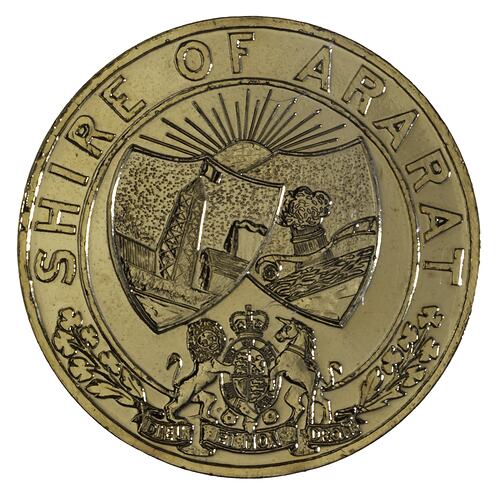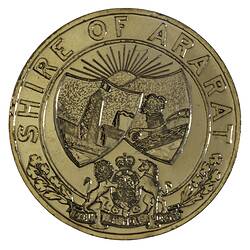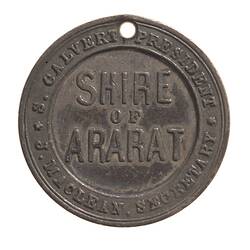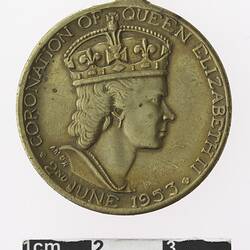Ararat, in central eastern Victoria, was originally the traditional lands of the Jajawurrong people. The Municipality of Ararat existed from 1864 to 1994. In 1836 Major Mitchell's expedition suggested the land was ideally suited to grazing. Amongst the first settlers was Horatio Spencer Wills, who drove his stock from the Murrumbidgee. In 1840 Wills camped near a large bald mountain which he named Mount Ararat, for 'Like the Ark, we rested there'. Sheep and cattle pioneers increasingly settled in the area, and it became one of Australia's most prosperous agricultural districts with a reputation for producing quality merino wool.
The First Peoples population endured increasing suffering as accessible hunting lands vanished and diseases decimated the population. More than 3,000 First Peoples had lived in the Western District before European settlement, but by the 1877 Census there were 174.
Gold was first discovered in the region in May 1854 at Pinkey Point, some 6km west of Ararat, by Joseph Pollard and friends. Other gold finds soon followed, including a find at Canton Lead, one of the world's richest shallow alluvial goldfields, made in May 1857 by Chinese en route for the Victorian goldfields. Thus the township of Ararat was born, named after the nearby Mt Ararat, and within weeks the population had exploded to 20,000. In the first three months, the Canton Lead yielded over 3 tons of gold. The town site was hastily surveyed in 1858, but in the same year a dramatic fall in the gold price saw many miners depart. In 1859 however, the estimated Chinese population at Ararat was still 4,000. Large numbers of Chinese were making their way into Victoria from South Australia to avoid Victoria's restrictive immigration laws.
Ararat quickly became a centre for government services for the goldfields and the surrounding pastoral areas. In 1860-61 a bluestone gaol was erected, at the same time as the Ararat and District Hospital was established. In 1863 market sheds were constructed. Ararat became a Shire in 1864 and within two years the market sheds were converted into a temporary town hall.
After the gold rush had abated, Ararat continued to function as a government and pastoral service centre. A substantial wool and grain store was built in 1874, the same year the railway line finally reached Ararat. In 1886 the Gaol was converted into 'J Ward' and assigned to the Lunacy Department. It became an annex of the Ararat Mental Hospital known as 'Aradale', operating as an asylum for the criminally insane.
In 1887, when T. Tobin was Mayor, the Town commissioned a medal to commemorate Queen Victoria's Jubilee [NU 20413]. In 1888 Ararat sucuumbed to the prevailing passion for exhibitions by holding the Victorian Juvenile Industrial Exhibition. Medals were issued in commemoration of the event [NU 35427 and NU 34528], naming S. Calvert as Shire President and J. Maclean as Shire Secretary. In 1897 another medal was issued, this time to commemorate Queen Victoria Diamond Jubilee [NU 20429]. Clavert and Maclean were named in the same posts on the medals.
The saga of the town hall continued, and after twenty-five years of meetings, the Council agreed to borrow £5000 to build a new town hall. The foundation stone was laid on 30 November 1898, celebrated with a procession including the Rangers, fire brigade, bands and school children. The Town Hall was finally opened on 18 October 1899.
In 1950 Ararat City was established. 35 years later the Shire issued another medal, this time commemorating the Sesquicentenary of Victoria [NU 20687].
On 23 September 1994 the City and Shire of Ararat and parts of Shires of Moyne, Northern Grampians and Southern Grampians combined by Order of the Governor in Council to become the Ararat Rural City Council.
Today Ararat is a thriving community serving a region that continues to be known for its quality merino wool and fine wines.
References:
People's Voice: Australian Community History Online website http://www.peoplesvoice.gov.au/stories/vic/ararat/ararat_c.htm , accessed 12/11/2003.
Ararat Rural City website http://www.ararat.vic.gov.au/Page/Page.asp?Page_Id=191&h=1, accessed 12/11/2003.
Blake, L. (1977). Place Names of Victoria.
More Information
-
Keywords
-
Localities
-
Authors
-
Article types




